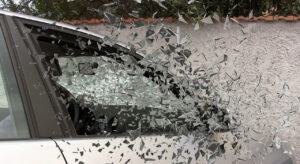In the unfortunate event of a loved one losing their life in a car accident, seeking justice through a wrongful death claim becomes essential. Proving negligence in such cases is a complex yet crucial process. This article guides filing a wrongful death claim after a car accident and establishing negligence in a car accident wrongful death case, offering insights into the necessary steps and the significance of legal assistance.
Establishing Duty of Care
To prove negligence in a car accident wrongful death case, one must first establish the concept of “duty of care.” This legal obligation requires every driver to act responsibly and follow traffic laws to protect others on the road.
In demonstrating the duty of care, it is imperative to gather evidence that shows the at-fault driver’s responsibility to drive safely. This might include presenting witness statements, accident reports, and any relevant traffic regulations violated during the accident.
It’s essential to emphasize that duty of care is a fundamental principle in any negligence case. By highlighting this point, the bereaved family can lay a solid foundation for their wrongful death claim.
Demonstrating Breach of Duty
Once the duty of care is established, the next step is proving that the at-fault driver breached this duty. This means showing that they failed to fulfill their responsibility to drive safely and responsibly, leading to the accident.
Suggestion: Top 7 Things To Keep In Mind When Buying An Electric Vehicle
To establish a breach of duty, the family should collect compelling evidence such as eyewitness testimonies, photographs of the accident scene, and any available surveillance footage. This evidence should demonstrate that the at-fault driver’s actions deviated from the standard of care expected from a reasonable and prudent driver.
Highlighting the breach of duty is crucial, as it directly links the at-fault driver’s actions to the wrongful death, creating a compelling argument for negligence.
Causation and Proximate Cause
Causation plays a vital role in wrongful death claims. It is necessary to establish a direct link between the at-fault driver’s breach of duty and the accident that led to the wrongful death.
Proving causation can be intricate, requiring the use of medical records, accident reconstruction reports, and expert testimony. These elements help illustrate how the at-fault driver’s actions directly resulted in the fatal accident.
It is important to stress the significance of causation in building a strong negligence case. The case may falter without a clear connection between the breach of duty and the wrongful death.
Establishing Damages
In wrongful death claims, demonstrating the damages suffered by the surviving family members is essential. These damages can include funeral expenses, medical bills, loss of financial support, and the emotional anguish caused by the loss of a loved one.
Also Check: 9 Most Affordable V6 Twin Turbo Cars To Buy In 2024
To bolster their case, the family should gather meticulous documentation of these damages, including invoices, receipts, and financial records. This documentation quantifies the financial and emotional toll inflicted by the wrongful death.
Emphasizing the importance of establishing damages underscores the need for compensation to address the real-life consequences of the loss, both financially and emotionally.
Negligence Per Se
In certain cases, negligence can be established more straightforwardly through the concept of “negligence per se.” This occurs when the at-fault driver violates specific traffic laws, directly contributing to the accident and subsequent wrongful death.
Negligence per se simplifies the process by eliminating the need to prove duty of care and breach separately. Instead, the focus shifts to demonstrating that the driver violated a relevant traffic law, making the case more straightforward.
Stressing the concept of negligence per se can help families recognize when this legal doctrine may apply to their situation, potentially expediting their legal proceedings.
Seeking Legal Assistance
Proving negligence in a car accident wrongful death case is intricate and emotionally challenging. The bereaved family should seek the guidance of an experienced attorney specializing in wrongful death cases.
Highlighting the role of a skilled attorney in the process emphasizes the need for legal expertise. An attorney can navigate the complexities of the legal system, gather essential evidence, and advocate for the family’s rights during this difficult time.
Underscoring the importance of seeking legal assistance ensures that the family receives the support and expertise to pursue justice effectively.
Losing a loved one in a car accident due to someone else’s negligence is a heartbreaking experience. Proving negligence involves establishing the duty of care, demonstrating a breach of duty, establishing causation, quantifying damages, and, in some cases, relying on the concept of negligence per se. Seeking the assistance of a skilled attorney is essential in navigating this challenging process and seeking justice for the wrongful death. While compensation cannot replace the loss, holding the responsible party accountable can provide closure and support for the family’s future.







